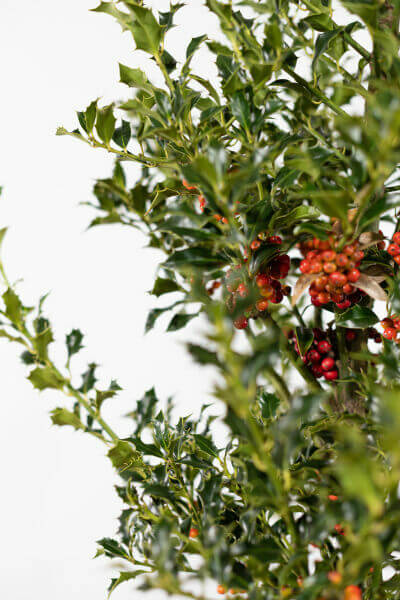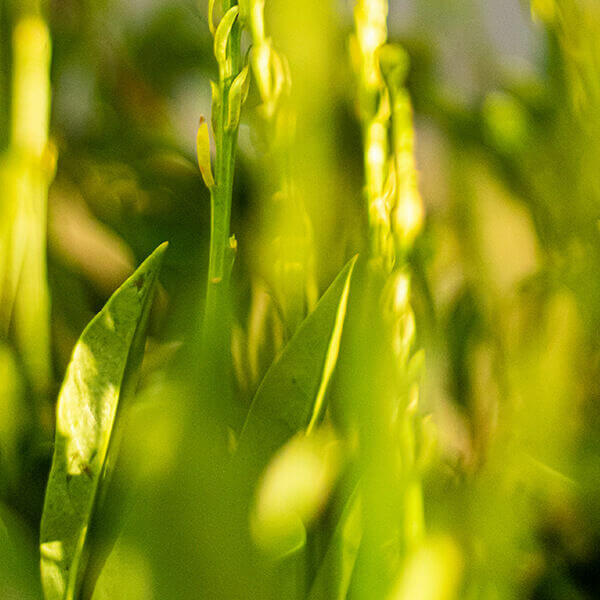Hedge Plants For Living Walls
Improve your garden's appeal with lavish hedge ranges such as Yew (Taxus), Thuja, Laurel, Photinia, and Bamboo, celebrated for their structural integrity and environmental advantages.
Yew and Thuja supply evergreen protection and winter strength, while Laurel offers rapid development and broad, fragrant leaves.
Photinia adds seasonal charm with its dynamic red foliage, and Bamboo lends a low-maintenance, peaceful ambiance.
These hedges enhance air quality, decrease sound, and create tranquil, personal spaces.
Appropriate planting, spacing, and upkeep ensure energetic growth and environmental consistency.
Check out how these lush varieties can raise your garden's appeal and wellness.
Key Takeaways
Change Your Garden With Lush Hedge Ranges
- Select Yew for its dense, evergreen growth and unequaled longevity.
- Choose Laurel for its quick development and broad leaves, ensuring quick privacy.
- Select Photinia for its lively seasonal foliage, which turns a striking dark red.
- Make use of Bamboo for a low-maintenance, winter-hardy hedge with visual appeal.
- Area plants 2-3 per meter and prune regularly for optimal development and health.
Popular Hedge Plants
When changing a garden with lavish hedge ranges, it's important to think about popular hedge plants such as Yew, Thuja, Laurel, and Photinia due to their special characteristics and benefits.
Yew (Taxus) is extremely esteemed for its longevity and dense, green development, making it a prime option for sustaining landscapes.
Thuja is kept in mind for its evergreen foliage and robust winter season durability.
Photinia adds seasonal vibrancy with red leaves that darken in time, producing dynamic visual appeal.
Laurel offers rapid growth and aromatic, broad leaves, perfect for quick privacy.
Additionally, Bamboo is an excellent choice for atmosphere, providing a low-maintenance, winter-hardy choice that enhances the garden's visual with its sophisticated, swaying walking sticks.
These selections deal with a range of horticultural needs and choices.
Advantages of Garden Hedges
Garden hedges offer a multitude of advantages, making them an important addition to any landscape. These natural barriers are affordable to implement and supply considerable wind protection, boosting air circulation and adding to noise decrease. The dense foliage of hedges like Thuja and Beech guarantees personal privacy by obstructing presence, producing a serene and remote environment.
Hedges likewise play an essential function in microclimate regulation, supplying a stable environment that promotes plant development and reduces temperature changes. Their intricate leaf structures filter contaminants, enhancing air quality and contributing to a healthier garden community.
Moreover, hedges master sound reduction, taking in and deflecting acoustic waves to lower ambient noise levels. This dual performance of providing both visual and acoustic personal privacy boosts the total tranquility and aesthetic appeal of any garden.
Planting and Maintenance Tips
For an effective hedge, careful preparation of the planting location is crucial. Ensure the soil has appropriate pH and drain to support strong root advancement.
Area the plants properly for the picked species. Water the hedge frequently during its initial growth phase, adjusting as needed with seasonal changes.
Execute a methodical insect control and disease prevention strategy, using chemical or organic treatments when required. Routinely examine for aphids, mites, and fungal infections.
Apply mulch to retain moisture and suppress weeds. Seasonal pruning promotes thick growth and air circulation, vital for plant health.
Following these standards will assist you cultivate a vibrant, well-maintained hedge that enhances the appeal of your garden.
Spacing and Trimming Guidelines
Spacing and Trimming Guidelines
Correct spacing and cutting are vital for cultivating healthy, visually appealing hedges. Adequate spacing makes sure each plant gets adequate nutrients, light, and airflow.
Follow these guidelines for optimum hedge upkeep:
- Spacing: Position hedge plants 2-3 plants per meter to encourage robust growth.
- Pruning Methods: Routine pruning is important for preserving desired hedge height and shape. Trim brand-new development in summertime and cut back older wood throughout winter.
- Seasonal Care: Change cutting schedules and techniques according to seasonal requirements to make sure plant health.
- Hedge Height: Routinely display and trim to keep the preferred hedge height and achieve consistent aesthetic appeals.
Sticking to these steps will guarantee your hedge flourishes, boosting both the appeal and functionality of your garden.
Picking the Right Hedge
Choosing the Right Hedge
Choosing the proper hedge involves examining aspects such as fully grown height, foliage density, and environmental strength. Successful hedge plant choice needs understanding each types' development characteristics and site-specific flexibility.
For example, Yew (Taxus) offers outstanding durability and thick growth, while Thuja Additional resources is noteworthy for its winter season strength. Additionally, considering upkeep requirements is vital; fast-growing types like Laurel or Privet demand regular trimming, whereas low-maintenance choices like Bamboo or Ivy might be more effective for those looking for minimal maintenance.
Ecological elements such as soil type, light schedule, and wetness conditions need to likewise assist the choice procedure. This mindful technique makes sure the picked hedges will grow, supplying both practical and visual benefits to the garden landscape.
Shipment and Planting Suggestions
To guarantee your hedge plants prosper, they ought to be delivered by specialized couriers and planted promptly upon arrival.
Follow these necessary actions for effective planting:
- Soil Preparation: Enhance the soil with natural matter to improve drain and nutrient material.
- Planting Depth: Produce a trench twice the width and equivalent to the depth of the root ball.
- Watering Strategies: Water completely after planting, keeping the soil consistently moist however not filled.
- Mulching: Use a layer of mulch to maintain wetness and suppress weeds.
Customer Assistance and Service
Provided the crucial function of timely assistance in horticultural pursuits, our customer support group is readily available 6 days a week through telephone, e-mail, and social networks to provide professional guidance and quickly resolve any concerns. Their devotion to quick action times guarantees consumer complete satisfaction by resolving inquiries related to plant health, ideal planting approaches, and maintenance schedules.

Response Time
This comprehensive support group, strengthened by an outstanding 9.3/ 10 consumer ranking, highlights our commitment to enhancing the gardening experience for every single client.
Regularly Asked Questions
The Length Of Time Does It Take for Hedge Plants to Develop?
Hedge plants normally need one to three years to end up being fully developed, with the exact period varying by species and growing conditions.
Reliable care during this important period is vital for robust growth. Consistent watering, alert weed control, and appropriate fertilizer application are critical in promoting strong root advancement.
For example, fast-growing species like Laurel might develop quicker, while slower-growing ranges such as Yew may take longer. Thorough upkeep accelerates the facility process, leading to healthy and dense hedges.
What Are the Finest Hedge Plants for Personal Privacy?
The question of the finest hedge plants for privacy includes evaluating evergreen and deciduous alternatives.
Evergreen hedges like Thuja, Laurel, and Cypress provide year-round protection, ensuring constant privacy.
On the other hand, deciduous hedges such as Beech provide seasonal privacy, shedding leaves in cooler months.
Key upkeep ideas for privacy hedges consist of routine trimming, fertilizing in spring, and correct spacing-- usually 2 to 3 plants per meter.
Additionally, constant watering and persistent weed removal are important for promoting healthy, dense development.
Can Hedge Plants Draw In Wildlife to My Garden?
Yes, hedge plants can bring in wildlife to your garden by offering essential advantages like shelter, food, and nesting websites, consequently enhancing regional biodiversity. For instance, yew, holly, and laurel are exceptional for drawing in birds, while ivy supports a variety of bugs.
Nevertheless, it's essential to keep in mind that there are some drawbacks, such as increased upkeep to manage insects and routine upkeep. Thoroughly selecting and preserving hedge ranges can help stabilize these disadvantages and advantages, ultimately promoting a lively and sustainable community in your garden.
Exist Any Flowering Hedge Plants Available?
Yes, there are flowering hedge plants offered that can boost the appeal of your garden.
For example, Elaeagnus, also understood as Olive Willow, produces aromatic white flowers in the fall, adding a touch of elegance.
Photinia, another popular option, showcases lively red leaves that grow into a rich green, creating a dynamic visual impact throughout the seasons.
To make sure these plants grow, it's vital to practice proper pruning methods and seasonal upkeep, such as cutting brand-new development in the summer season and cutting down in the winter season.
These measures will help maintain the health and aesthetic appeal of your flowering hedges.
How Do I Prevent Pests in My Hedge Plants?
To prevent pests in hedge plants, employ natural pest control techniques and preserve appropriate hedge care. Introduce useful bugs like ladybugs, which take advantage of hazardous insects, to produce a balanced community.
Routinely examine your hedges for indications of problem and without delay get rid of any afflicted parts to avoid the spread. Guarantee the health of your hedges by applying balanced fertilizers and providing appropriate water.
Make use of mulching to keep soil moisture and proper spacing to reduce plant tension and promote robust development. These practices collectively help in decreasing bug problems and preserving a healthy hedge.
Conclusion
In essence, choosing the ideal hedge varieties such as Yew, Thuja, and Laurel can change any garden into a serene sanctuary. These plants offer year-round greenery, boost aesthetic appeal, and offer useful benefits like noise decrease and wind security.
Proper planting strategies, precise spacing, consistent watering, and seasonal cutting are crucial for optimal development.
Dependable shipment services and professional customer assistance guarantee a seamless experience from purchase to planting, making it easier than ever to elevate your outside space.
Garden hedges use a wide range of advantages, making them an important addition to any landscape. These natural barriers are cost-effective to carry out and provide substantial wind protection, boosting air circulation and contributing to sound decrease. The dense foliage of hedges like Thuja and Beech makes sure privacy by blocking visibility, producing a serene and secluded environment.

Pruning Methods: Regular pruning is essential for keeping preferred hedge height and shape. Trim brand-new development in summer and cut back older wood throughout winter season.